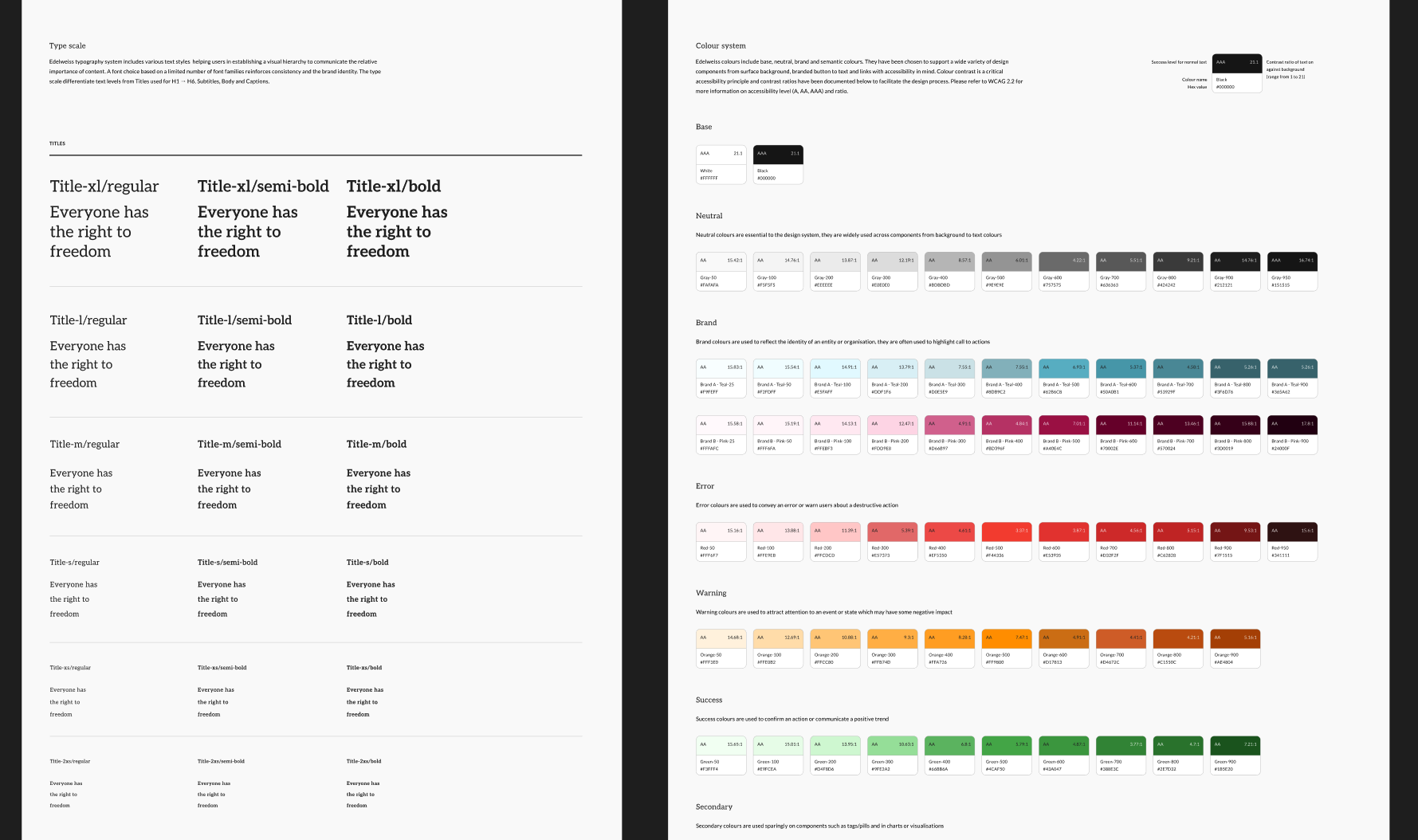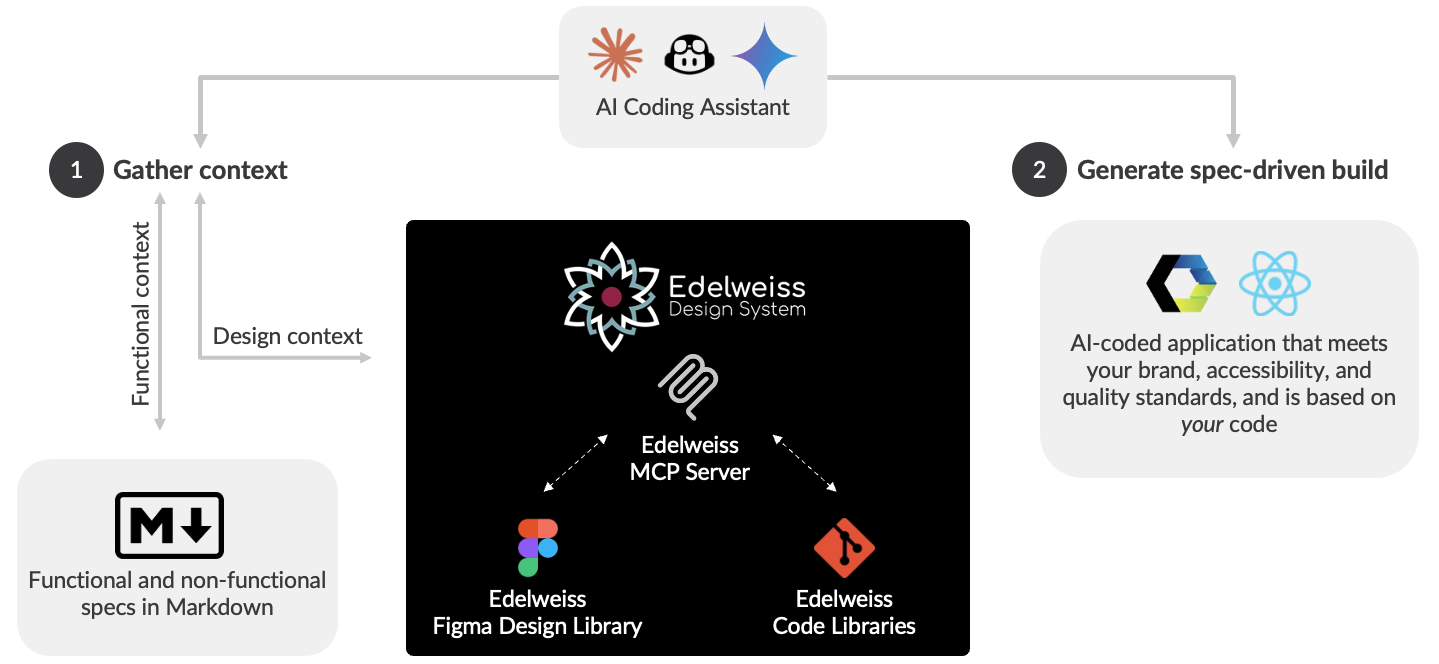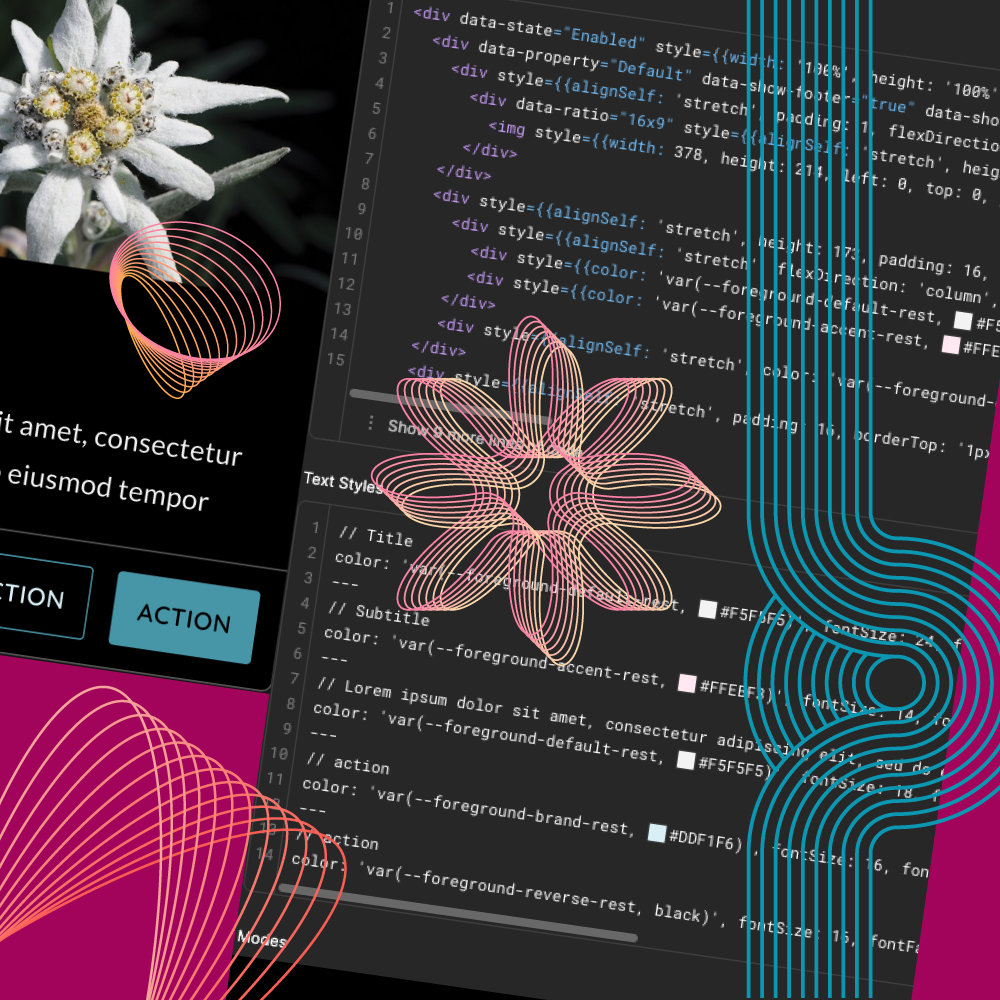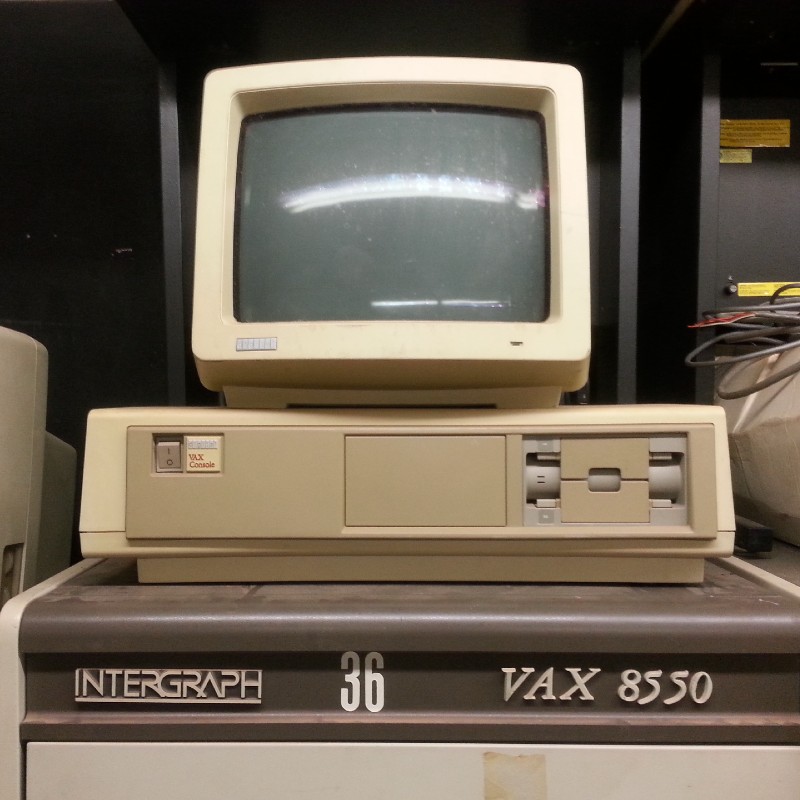The hard truth about enterprise design systems
Why DIY systems fail, and what to do instead
By Jesse Anton, CEO & Co-Founder of Whitespace
Date: 31 October 2025
As AI transforms how we design and build software, design systems are undergoing a renaissance.
Consistency, reuse, and fewer repetitive design decisions are all valuable pursuits that drive in-house teams to build their own design systems. The hard truth is that all too often, these systems start strong and then quietly collapse under their own weight.
What's more, most DIY systems are not primed for agentic coding and MCP-powered workflows, leaving them vulnerable to obsolescence.
We’ve seen it happen in enterprises across various industries: well-intentioned, home-grown systems that accumulate design and technical debt — and ultimately fail.
Here’s why — and what to do instead.
The DIY trap
The scene:
A large traditional enterprise with ambitious AI-driven productivity goals bumping up against a culture that's anything but digital-native.
The plot tension:
Leadership wants to move fast and impress the Board with shiny AI objects while simultaneously cutting costs. A design system would help. But there's no design system. Or there was one, but nobody knows where it is anymore because the team that built it left to join Google. Or there are several design systems ... but it turns out they are essentially useless and gathering dust. Who will save the day?
The protagonists:
A dashing designer and daring developer come together to start a fresh new DIY design system project. It starts small. A Figma library. A few color tokens. Some code snippets. A bit of documentation in Confluence.
The build-up:
For a while, things are good. The system grows. Everyone feels aligned. Our protagonists feel like heroes. Will they live happily ever after?
The plot twist:
A blue-chip management consultancy is hired and begins working on top-secret 'disruptive' PowerPoint slides in a dark corner of the building. They have the ear of the executive committee. Nobody knows for sure, but they might be recycling last week's work for another client and using AI to 'adjust the tone and context'. A new CTO (formerly with the management consultancy) parachutes in and announces a comprehensive refactoring and overhaul of the tech stack.
The dénouement:
Cracks begin to appear in the now-doomed system, including duplicated components, mismatched patterns, and missing documentation. The users start complaining and demanding retribution. The system becomes harder to maintain — and the promise of speed turns into a drag on momentum. Funding is lost. The system is jettisoned.
The anti-climax:
Our heroes apply for jobs at Uber. The management consultancy moves on to the next victim client. The curtain falls.
The moral:
Most design systems don’t fail because they’re bad ideas. They fail because they don't have the right conditions in which to thrive.
Why failure happens
Internal design systems lack the necessary structure, skill, and stakeholder commitment to succeed. This is not a reflection on the latent talent within the organization. It is the result of how the organization operates. It's cultural.
Common patterns we see:
- No governance: departmental resources 'on loan' are not centrally accountable
- No in-house expertise: designers lack solid Figma chops; development is outsourced
- No design-to-code parity: what’s in Figma doesn’t match what's in code
- No flexibility: product teams lack the freedom to use different JS frameworks
- No data: metrics and KPIs are not available
- No storytelling: the ROI is not clear to stakeholders
- No funding: if nobody 'owns' it, the product dies on the vine
Without clarity and care, even the best systems turn messy. And the costs start to compound.
The result?
- A fragile system: Multiple Figma files, naming conflicts, spacing inconsistencies — it all adds up when there is no process to govern the product. Every change becomes harder to trace, and risks begin to accumulate.
- A system that costs more than it's worth: Intended to boost speed and save money, your DIY system ultimately erodes trust and efficiency while consuming precious time and resources. Developers doubt components, designers duplicate work, no one maintains the documentation, and the system becomes a drain on delivery.
The biggest cost? What you could be doing instead. Every dollar spent maintaining an unscalable system is a dollar not spent improving the actual products and business tools that the system is meant to support.
The problem is worse than it appears
We observe that most of our enterprise customers are being taken advantage of by their so-called 'strategic' development partners (big-box offshore IT services companies), who happily reinvent the wheel each time they assign a development team to build a new bespoke solution for the client.
Often, these partners are unaware that a design system even exists within enterprise accounts, let alone where to find a basic pattern library. They start from scratch, using off-the-shelf libraries like MUI and 'bending and twisting' them to match the client's brand identity. The same UI components are created repeatedly because every product is essentially treated as an independent 'project' that is built in silos by separate 'teams' — not 'empowered teams' in the SVPG sense, but rather more like 'mercenaries' working on the clock.
It's not entirely the partners' fault. As previously mentioned, we also observe that most of our clients struggle to establish an in-house design system that is adequately staffed, properly architected, and sufficiently evangelized. Design system resources are 'borrowed' from other departments and disappear when politics intervene and power centers shift. Initiatives are often launched but fail to deliver before leadership priorities change, funding is cut, or a reorg wreaks havoc. The momentum dies, and so does the design system.
At least for a while. Different parts of the company eventually spin up competing systems, 'skunk works' style. There is a 'Wild West', shadow-IT mindset that pervades the product culture.
In the best-case scenarios, the design systems that do cross the chasm in enterprise environments are often challenging for both designers and developers to consume. As a result, adoption never reaches critical mass.
What good systems need
A scalable design system isn’t just a Figma library or a code repo that you download off the internet and 'tweak' — it’s a fully-fledged product. It requires:
- 1-1 mapping between design and code
- Robust, multi-tiered design token structure
- Automated CI/CD pipelines
- Flexibility for a changing technology landscape
- Accessibility and security by default
- Instrumentation for analytics and reporting
- Clear, AI-friendly documentation
- MCP-powered agentic workflows
- A skilled and dedicated team of design and development experts to govern it
Above all, it requires trust. And trust has to be earned. This doesn't happen overnight, which is why committed stakeholders and sufficient long-term funding are necessary to bridge the gap until trust can be established and ROI proved.
What you can do about this
Which brings us back to the original dilemma. The conditions for design system success rarely exist within a large enterprise. Digital-native companies can make design systems work, but even for them, it's a significant challenge. Outside of the tech industry, the rest of the world is still struggling to cross the chasm.
So what should enterprise technology leaders do? We believe we have the answer.
Consider your design system a product that you buy, not one that you build. It's ironic to say that, because a design system exists so that you can build products.
Introducing Edelweiss

At Whitespace, we have developed an Agentic Design System Platform called Edelweiss that enables any customer to deploy it in ‘plug and play’ mode to build software applications. It can be up and running (fully branded, fully accessible) in a matter of days. Additional customizations (e.g., departmental templates, industry-specific components) are available as part of a value-added service.
Having built numerous design systems in the past for various organizations, we realized we could create one that is flexible, customizable, and future-proof enough to suit the needs of most enterprise clients. Our mission is to bring the full value of design systems to enterprise customers, without the associated hassle and headaches that a DIY approach entails.
Part product, part service, Edelweiss Design System™ is a turnkey 'UI infrastructure' solution for your enterprise AI architecture. Teams building software products on top of LLMs, data lakes, data virtualization, etc. — all that investment in AI-driven product development that large companies will be making over the next decade — now have a structured UI layer to tap into, meaning product builds become significantly more efficient, consistent, automated, and accessible.
As the only solution on the market backed by an SLA, Edelweiss comes with dedicated customer success and support services that guarantee rapid returns and long-term value. Our experts stay up-to-date with the latest technology and tooling capabilities, so you don't have to. Right out of the gate, you need fewer internal resources allocated to core design system work, which means your designers and developers can stay focused on solving business problems, not reinventing the button.
We believe this is category-defining: a Design System as a Service.
But the story doesn't end there. When AI and design systems meet, magic happens.

Set yourself up for success
AI is changing how software is designed and developed.
While vibe coding solutions, such as Lovable and V0, are interesting for ideation and rapid prototyping, they have no place in an enterprise's production software infrastructure.
Agentic coding assistants — such as Claude Code, GitHub Copilot, and Codex — are an entirely different story. They have real utility in your SDLC, provided they are given the context and guardrails in which to operate.
Edelweiss is the missing UI piece of the new agentic coding puzzle.
Context is king
Parity
To provide structured context for AI, we mapped Figma variables to CSS variables and integrated them through an MCP-powered CI/CD pipeline that automates design-to-code workflows. This means that our design and coded components are in sync. What's in Figma matches what's in code.
Figma
On the Figma side, our design token architecture is multi-tiered, enabling maximum flexibility to support various brands, products, and verticals. Linting is baked in, which helps ensure that accessibility and quality standards are met.
Code
On the code side, we provide libraries for both Web Components and React, ensuring that development teams are not locked into any particular framework. Great for SPAs, Web Components are portable and usable straight away on any platform and in any of your existing tech stacks. Our React library is for customers who have standardized on this framework or who need SSR capability.
Documentation
AI also likes structured documentation, and ours is complete and precise. Each component is fully documented (and maintained!) in Figma, Storybook, and JSDoc. Companies that require a centralized documentation repository, such as Zeroheight or Knapsack, can optionally utilize our reference documentation starter kit, along with the Figma, Storybook, and Git integrations offered by those platforms.
MCP Server
AI agents can invoke Edelweiss via MCP. Our built-in MCP Server enables you to ‘tame’ agentic coding assistants, ensuring they only use the coded components from the design system library. Effectively, agents will no longer pull from code found in the wild while you 'hope for the best' … meaning you get a far more deterministic output.
Designers can create Figma screen flows using the Edelweiss design component library, and MCP provides context (design intent) for AI agents to assemble front-end code from the mapped components in the Edelweiss code repository. This is the closest thing we've seen to ‘designing with code’.
Front-end developers benefit, too. They can now spend more time on backend integration tasks (hooking up to GraphQL or REST endpoints) and less time on interpreting 'fuzzy' design directions. In addition to enabling component assembly based on Figma screens or through text-based prompts, the MCP Server provides developers with valuable information about Figma variables and the styles of the coded components. AI is a powerful new light you can shine on the design<>development dance.
Spec-driven development
Overall, design-to-code workflows are dramatically streamlined.
When paired with 'spec-driven development' (see Amazon Kiro, for example), this agentic SDLC approach is expected to gain popularity and precision, meaning the value proposition of Edelweiss will continue to increase.

More bang for your buck
Code reuse is a big deal. Branded, accessible, and AI-ready code reuse is an even bigger deal.
We expect Edelweiss to save enterprise clients millions every year, not only on in-house DesignOps costs, but also on product development and brand management costs.
- Procurement can use it as leverage to renegotiate contracts with the 'strategic' development partners mentioned above.
- Product teams can put working prototypes in front of business stakeholders more frequently, which reduces risk and shortens time to value.
- Marketing teams can manage multi-brand ecosystems and global design updates from a single source of truth instead of 'policing brand compliance' ad hoc.
- IT leaders can accelerate delivery in both agentic and traditional coding environments, while improving consistency, quality, and accessibility.
It's a significant ROI.
While nothing prevents a digital-native company from adopting Edelweiss, we didn't build it to solve their problems. Instead, we set out to create a system that helps traditional enterprises leapfrog to a level of maturity on par with the Spotifys and Shopifys of the world.
This is just the beginning of our journey, and we have already signed up several multinational companies — brands you're familiar with — as early adopters. Will you join us?
You can learn more at Edelweiss.dev (site launching Q1 2026). In the meantime, if you are interested in becoming an early adopter, get in touch with us to arrange a demo.




